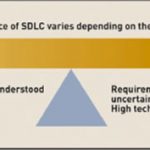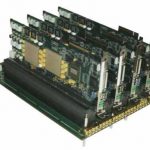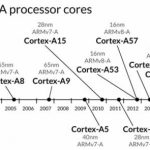At the high end of the Atmel product spectrum resides SAMA5 based on an ARM Cortex-A5 core. With an MMU supporting Linux or Android, plus on-the-fly memory encryption and ARM TrustZone in some variants, the SAMA5 family is drawing interest from IoT app developers. We’ll look at three examples, all illustrating how important seamless… Read More
Author: Don Dingee
OCF shows there may be hope for IoT consortia yet
The recent launch of the Open Connectivity Foundation (OCF) was met first with a wave of “oh good, another IoT consortium”, then “phew, it’s just a rebrand of the OIC”, followed by a bit of confusion over why a few AllSeen Alliance players and some other names jumped in. Is it just a marketing ploy, or is there more to this?… Read More
FPGA tools for more predictive needs in critical
“Find bugs earlier.” Every software developer has heard that mantra. In many ways, SoC and FPGA design has become very similar to software development – but in a few crucial ways, it is very different. Those differences raise a new question we should be asking about uncovering defects: earlier than when?… Read More
Aldec reprograms HES7 for AXI4 speed
FPGA-based prototyping firms are all grappling with the problem of higher speed connectivity between a development host and their hardware. Aldec is announcing their solution at DVCon 2016, turning to an AMBA AXI4 interface bridged into a host with PCIe x8.
Faster host interfaces deliver dual benefits in FPGA-based prototyping.… Read More
Mentor ARM subscription signals ecosystem shift
Since creating the landmark “all-you-can-eat” license with Samsung in 2002, ARM has inked several subscription deals with chipmakers and EDA firms. The latest ARM subscriber license deal just announced is for Mentor Graphics. What makes their strategy unique?… Read More
tinyAVR in 8 and 14 pin SOIC now self-programming
At this week’s Embedded World 2016, Atmel is heading back to 8-bit old school with their news, straight to the low pin count end of their MCU portfolio with a significant upgrade to the tinyAVR family.
According to Atmel’s briefing package, development of the ATtiny102 and ATtiny104 has been in progress for some time.… Read More
S2C opens up FPGA prototyping for PCIe fabrics
Reconfigurable computing began with FPGA cards dropped into expansion slots in workstations. FPGA-based prototyping vendors tended away from that model as interconnect speeds rose and cabling complexity between modules increased. Much faster PCIe interfacing and bigger FPGAs mean revisiting the concept.… Read More
SoC power management a study in transition latency
Apple’s recent bout with ‘Batterygate’ highlighted just how important dynamic power management can be. Our last Sonics update looked at using their NoC to manage power islands; this time, we look at their research progress on architectural measures for power management.… Read More
New CEVA X baseband architecture takes on multi-RAT
What we think of as a “baseband processor” for cellular networks is often comprised of multiple cores. Anecdotes suggest to handle the different signal processing requirements for 2G, 3G, and 4G networks, some SoC designs use three different DSPs plus a control processor such as an ARM core. That’s nuts. What is the point of having… Read More
Reconfigurable redefined with embedded FPGA core IP
On November 1, 1985, before anyone had heard the phrase field programmable gate array, Xilinx introduced what they called a “new class of ASIC” – the XC2064, with a whopping 1200 gates. Reconfigurable computing was born and thrived around the RAM-based FPGA, whose logic and input/output pins could be architected into a variety… Read More











Jensen Huang Drops Donald Trump Truth Bomb on Joe Rogan Podcast